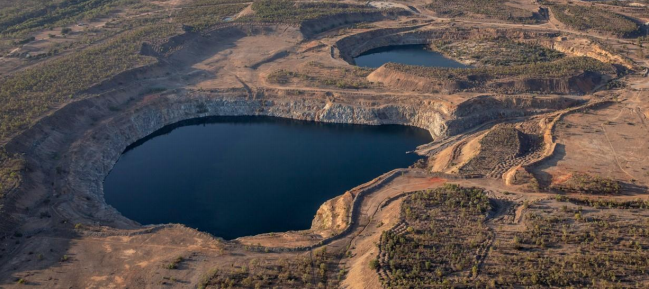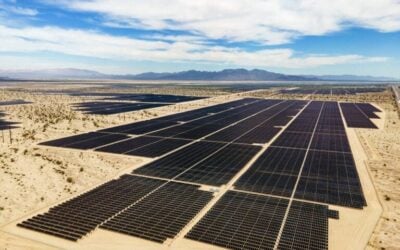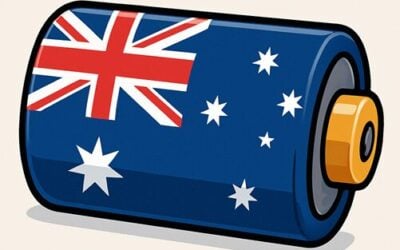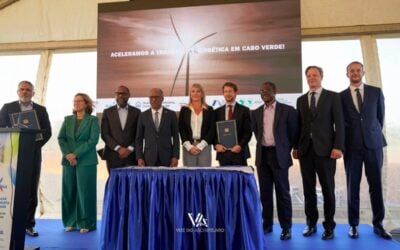
An agreement has been reached between the developer of a large-scale pumped hydro energy storage project in Ontario, Canada, and the Department of National Defence that could see the project built on federal land.
TC Energy, a company which operates a network of natural gas and crude oil pipelines as well as other energy infrastructure assets in North America, is hoping to build the Ontario Pumped Storage Project.
It would be a 1,000MW emissions-free energy storage system that TC Energy claimed would generate around CA$12.1 billion (US$9.69 billion) in energy cost benefits — saving electricity customers about CA$250 million per year — as well as creating nearly 3,000 jobs directly and indirectly over the next eight years. The facility would help optimise the use of energy in the region and lower greenhouse gas (GHG) emissions.
TC Energy announced yesterday that the agreement reached with the Department of National Defence remains subject to conditions and regulatory approval but could allow for the massive facility to be built on land at the Department’s 4th Canadian Division Training Centre in Meaford, Ontario.
Try Premium for just $1
- Full premium access for the first month at only $1
- Converts to an annual rate after 30 days unless cancelled
- Cancel anytime during the trial period
Premium Benefits
- Expert industry analysis and interviews
- Digital access to PV Tech Power journal
- Exclusive event discounts
Or get the full Premium subscription right away
Or continue reading this article for free
It needs to be proven that the siting or construction of the project would not have any impact on military activities and training and the next steps in project development include provincial and federal environmental and impact assessments.
The company is also consulting with indigenous rights holders and communities in the area, as well as engaging with local communities and other stakeholders to assess the system’s likely impacts and economic benefits.
The federal government’s approval has been welcomed by trade union organisations including Canada’s Building Trades Union and the Ontario Provincial District Council of the Local Unions of the Labourer’s International Union of North America (LiUNA OPDC).
“Infrastructure projects, like this pumped storage project, that provide long-term employment and strong middle-class wages are at the heart of the Canadian economy,” LiUNA OPDC business manager Jack Oliveira said.
“With the current economic downturn as a result of the COVID-19 virus, support for infrastructure projects to begin repairing our economy has never been more important.”
“As Canada transitions towards net zero, projects like this will create job opportunities for journeypersons and apprentices alike, which is vital for our economic recovery,” Sean Strickland, executive director of Canada’s Building Trade Unions said.
It’s the latest in a number of large-scale pumped hydro projects being planned or under development around the world today, after many years of relative inactivity in the space. Pumped hydro remains a proven low-emissions technology for storing large amounts of energy for several hours at a time, at a low cost of operation, but barriers have included the difficulty of finding suitable sites and the high initial capital cost of building them. With the global growth in renewable energy necessitating means to integrate that variable generation onto the grid, pumped hydro appears to be having a renaissance. Earlier this summer Energy-Storage.news reported that US regulator FERC gave preliminary approval to a 2.65GW project in Washington State, but the site has also reported in the past few months on various schemes in countries from Uzbekistan to Australia.
“As Ontario seeks to lower ratepayer costs and optimize existing and future generation assets, energy storage technologies, including pumped hydro storage, are primed to play an enhanced role on the province’s electricity grid,” Justin Rangooni, executive director of industry association Energy Storage Canada, said.
Meanwhile the largest battery project under development in Ontario is the 250MW / 1,000MWh Onedia Energy Storage facility planned in the southwest of the province, by a joint venture (JV) between developer NRStor and Six Nations of the Grand River Development Corporation, a group representing the economic interests of various First Nation communities. The national Canada Infrastructure Bank (CIB) looks set to become an investor in that project.





